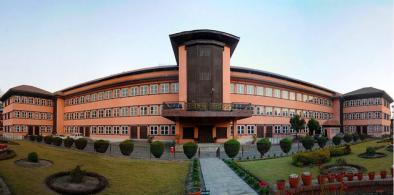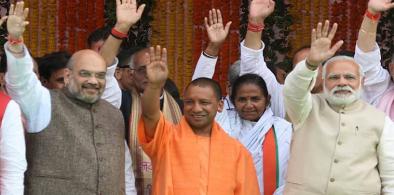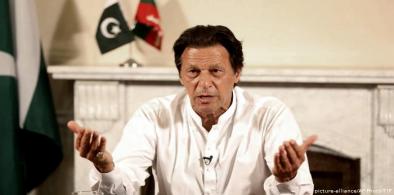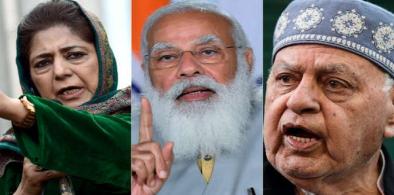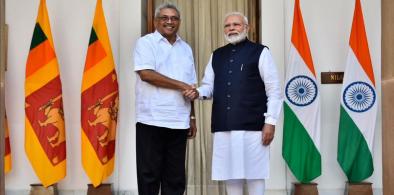The Chinese Communists were never shy in shaking hands with insurgents and rebels from India. In contrast, the Dalai Lama has never wielded a weapon. In that sense, he is also a Mahatma Gandhi, writes M.R. Narayan Swamy for South Asia Monitor
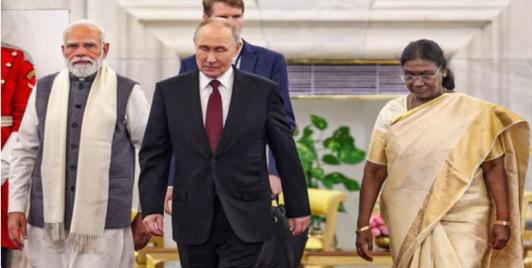
In Putin Visit India Reasserts Its Strategic Autonomy
The visit has also proved crucial for Putin in terms of international optics where the world’s largest democracy and its prime minister offered sanguine words to him. Although pomp and circumstance often attend such visits, it is not inconceivable that some of that was aimed at sending a signal to President Donald Trump, particularly on the question of his pressure on Modi to altogether stop importing Russian oil as well as a punitive 25% tariff on New Delhi in response to that.
The Cartography of Power: Why the India–Nepal Border Dispute Will Shape South Asian Geopolitics
Ultimately, the India–Nepal border dispute is not only about the origin of a river. It is about how neighboring countries engage with shared history, evolving national identities, and shifting geopolitical environments. In a region shaped by growing strategic competition and enduring historical legacies, the conversation around Kalapani and Lipulekh remains a significant chapter in South Asian diplomacy
India-Russia Civil Nuclear Cooperation: Why So Crucial And The Road Ahead
Amid fragmented supply chains, the Russia-Ukraine war, Russia-China convergence, and escalating US-China tensions, India’s nuclear cooperation with Russia helps hedge against overdependence on the West and ensures Moscow remains embedded within India’s strategic ecosystem. While Russia needs stable export markets, India needs dependable technology and supply chains — a mutual dependence strengthened by sanctions and geopolitical flux.
The Muslim Brotherhood’s Ideological Insurgency Poses A Transnational Challenge
The Brotherhood’s strategy is global. In India, pro-Palestinian protests have been weaponized by groups including Jamaat-e-Islami, Jaish-e-Muhammad, Lashkar-e-Taiba, ISIS-linked entities, and Pakistan’s ISI to stoke communal hostility and recruit young Muslims into political Islam. Hundreds of millions of dollars have been funneled toward campus radicalization, media manipulation, and political influence campaigns that demonize Hindus and normalize Islamist narratives.
Nepal in need of massive judicial reforms to ensure implementation of court orders
The Supreme Court of Nepal issued 246 verdicts in 2019-2020 to be implemented by the various ministries, The government, in most cases, didn’t comply with the court orders, writes Ravi Nayak for South Asia Monitor
How remote-area vaccination is boosting India's security
The government’s vaccination outreach to remote border areas, in Kashmir and the Northeast, and the local people's smiling embrace of these efforts was an indication of their comfort level and confidence in the Indian system, writes Nilova Roy Chaudhury for South Asia Monitor
Can the US underwrite regional stability against emerging Chinese threats?
In the long run, if tactically implemented, the B3W initiative can also help India and its allies balance China’s String of Pearls strategy in South Asia and beyond, writes Pradeep S. Mehta for South Asia Monitor
Uttar Pradesh will be a bellwether of Modi's continuing popularity
A defeat in Punjab or in Goa will not bother the BJP too much. But UP is different not only because its location in the heartland has always provided significant pointers about political trends, writes Amulya Ganguli for South Asia Monitor
Can Imran Khan's 'Pakistaniyat' help improve the country's self-image?
“Hollywood-Bollywood vulgarity” has been one of Imran Khan’s pet peeves for long and he has ordered the drafting of a new nationalist, culturally-centred film policy for Pakistan that is yet to be made public, writes Mahendra Ved for South Asia Monitor
Bangladesh struggling to vaccinate its people amidst a looming third wave of Covid 19
Public health experts believe that Bangladesh, despite having a good record of conducting vaccination programs, has failed in the case of the Covid jabs because of its earlier reliance on a single vaccine, writes Rakib Al Hasan for South Asia Monitor
Can the Afghan government channelise numerous people's movements into a new anti-Taliban front?
If the Afghan government can accurately manage the spontaneous movements of the people and prevent them from becoming mere tools for the warlords, not only can it create a new front against the Taliban, but also mobilize public opinion to a large extent, as it is already doing to some extent, writes Saleem Payenda for South Asia Monitor
Modi's Kashmir meeting has many regional ramifications, will be keenly watched
Unless Kashmir moves towards democratic governance - and New Delhi is able to reach some kind of modus vivendi over it with Islamabad - it will remain vulnerable to extremist influences and spillovers from the notorious AfPak terror sanctuaries, writes Tarun Basu for South Asia Monitor
US military exit from Afghanistan will be China's strategic gain
The US will realize its strategic blunder of surrendering Afghanistan to the Taliban after the entire Af-Pak-Iran region comes under Chinese influence, writes Lt Gen Prakash Katoch (Retd) for South Asia Monitor
India's digital talent can be harbinger of new direction in Japan-India cooperation
Hamstrung by the shortage of digitally skilled hands, Japan needs to rope in digital talents from India that constitutes one of the biggest digital talent pools, writes S. Majumder for South Asia Monitor
Why India is losing ground in Sri Lanka
India has to reflect on its own conduct vis-à-vis smaller neighbors including Sri Lanka to have some idea of why country after country it had counted as friends are leaning towards China, writes M.R. Narayan Swamy for South Asia Monitor
International community needs to extend humanitarian assistance to Bangladesh to end lingering Rohingya crisis
Bangladesh cannot solve the Rohingya crisis alone; the international community should come forward in implementing the promised humanitarian actions and work in coordination with Bangladesh to find a durable solution to the festering problem, writes Shaikh Abdur Rahman for South Asia Monitor
Covid-19, climate and China: The connection of the three Cs
This pandemic has awakened us up to the reality that no nation is safe, whether powerful or weak, when nature unleashes its fury. However, it also presents an opportunity where no citizen of any nation is weak if they are determined to live in a better and cleaner environment, writes Dr. Prachi Aggarwal for South Asia Monitor
Bengalis in Pakistan: A neglected community crying for recognition
Pakistanis call Karachi 'Mini Bangladesh'. There are about 132 Bengali colonies in and around Karachi, the largest city in Pakistan, writes Rakib Al Hasan for South Asia Monitor






